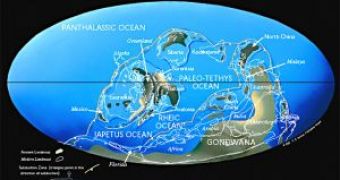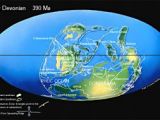Geologists have discovered that a south Mexican rock outcropping the size of Massachusetts, called Acatl?n Complex, is linked to the Appalachian Mountains' formation 420 million years ago, find that led to the redrawing of the planet map of that time.
All the Mexican structures were long assumed to be part of the American Cordillera which stretches from Alaska, through Rocky Mountains to South America, with the Andes.
"It was a story that had the Appalachians written all over it," said Damian Nance, Ohio University professor of geological sciences.
"This changes existing theory regarding the creation of the Appalachians, which has radically altered scientists' understanding of the planet's geography", said Nance.
Age analysis, new fossils and chemical composition of the rocks prove that the complex is much younger than thought, storing a unique ancient proof of the Appalachian story.
Previous knowledge accounted for two main land masses separated by the Rheic Ocean 420 million years ago: the Southern supercontinent of Gondwana comprising South America, Africa, India, Australia and Antarctica and the Northern supercontinent of Laurasia, embracing North America, Greenland, Europe and most of Asia.
The old map showed that the Ac?tlan Complex belonged to Laurasia.
80 million years earlier, Gondwana drifted toward North America, closing an ancient ocean, the Iapetus Ocean, found between Laurentia (North America and Scotland) and Baltica (Scandinavia) (both parts of Laurasia) and the collision with Laurasia created the Appalachian Mountains.
But evidence from the Acatl?n Complex proves that the collision actually occurred about 120 million years later.
Rocks from Acatl?n, once on an ancient ocean floor, originated in the later Rheic Ocean (found between Baltica and Gondwana), not Iapetus, as previously believed.
This indicates that Acatl?n Complex was originally part of Gondwana and Gondwana, slamming into North America, closed the Rheic Ocean.
"This cataclysmic crunch of continental plates formed the Goliath land mass known as Pangea, Nance said, and created the Appalachian Mountains."
"We believe we have found the missing piece of the Rheic suture where Gondwana and North America converged," said Nance.
"All the evidence point to that and, as far as we know, it is the best preserved piece of this puzzle in North America."
Now, geologists want to intensify the study of the Rheic Ocean in order to decode its existence from initial opening to final closure.
"We want to see if the ocean opened and closed everywhere at the same time or at different times like a jaw opening and closing. We want to understand the mechanics of these processes," said Nance.

 14 DAY TRIAL //
14 DAY TRIAL // 
